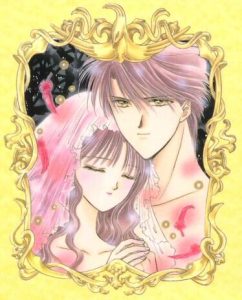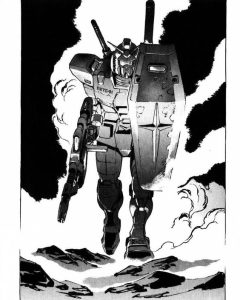18 Japanese Manga Terms to Understand a Cultural Phenomenon
Manga is a style of Japanese comic book that has become hugely popular all over the world. They’re known for their unique art, engaging stories, and wide range of genres – from action and adventure to romance and mystery. Manga has something for everyone, and its impact goes beyond just reading for fun; it’s also a glimpse into Japanese culture and society.
Nowadays, manga is not just for kids or comic fans in Japan. It’s everywhere, and people of all ages are getting into it. Whether you’re a parent trying to understand what your teenager is so obsessed with, a teacher seeing your students exchange manga books, or just someone who’s curious about this type of literature, there’s a lot to learn. This glossary of Japanese manga terms is a great place to start if you want to get to know more about manga and why it’s become such a big deal.
Table of Contents
→Sign Up Now: Free Trial Japanese Lesson With a Native Teacher!←
1. Anime
Anime refers to Japanese animated TV shows, movies, or web series. These animations cover a variety of genres and styles and are made for different age groups. Many animes start as manga, which is Japanese comic books before being adapted into animated versions. For example, “Naruto” began as a manga written by Masashi Kishimoto and was later adapted into an anime series that has become famous worldwide.
2. Harem
In manga and anime, a harem involves a storyline where a single male character is surrounded by numerous female characters who show romantic interest in him. Often, these types of series are adaptations of dating simulation games or are designed to attract similar audiences, especially in the seinen genre. When it’s a woman who is surrounded by many men in manga/anime, it’s called a reverse harem. This term was coined by Western fans of what is typically known as lovecomi (romantic comedies), although its basic meaning is also recognised by Japanese fans.

Fushigi Yugi, via Pinterest.
3. Isekai
Isekai is a fantasy subgenre where a character is abruptly taken from their familiar surroundings to a new or strange world. This concept is not unique to Japanese media; it’s also seen in classic Western literature like Lewis Carroll’s “Alice in Wonderland,” and L. Frank Baum’s “The Wizard of Oz.” Similar to characters like Alice and Dorothy Gale characters in isekai stories find themselves in mystical lands filled with magic, swordplay, and quests. For instance, “Fushigi Yugi” tells the romantic tale of Miaka, a girl who, after reading an ancient forbidden book, is transported to a fantastical world resembling medieval China, where she is revered as a priestess sent by a guardian god.
4. Josei
As a general Japanese term, the word “josei” is comprised of two kanji characters, “woman” and “sex,” and it is the most common term to refer to women. Josei manga and anime are aimed at adult women, dealing with more mature themes than those found in shojo, which is targeted at younger girls. An example of josei manga is “Nana” by Ai Yazawa, which explores the lives, loves, and hardships of two women who share the same name but lead very different lives.
5. Kawaii
Kawaii means “cute” in Japanese and is a significant cultural and aesthetic concept. In manga and anime, this manifests in characters with adorable designs and behaviours. “Hello Kitty,” a character created by Sanrio, is a globally recognised example of kawaii culture.
6. Kodomo
Kodomo manga and anime are specifically created for children. These works are characterised by their simple stories, colourful art, and often educational content. “Doraemon,” a classic Kodomo series, follows a robotic cat from the future who helps a young boy navigate his childhood.
7. Light Novel
Light novels are a type of Japanese young adult literature often accompanied by manga-style illustrations. They are shorter than traditional novels and often serve as the basis for manga and anime adaptations. “Re: Zero – Starting Life in Another World” by Tappei Nagatsuki started as a light novel before becoming a popular manga and anime series.
8. Lolita
In manga, Lolita fashion makes characters appear innocent, elegant, or doll-like, often inspired by Victorian and Rococo fashion. It’s a distinct style used to add depth to characters, as seen in “Rozen Maiden,” where the dolls are depicted in elaborate, Victorian-inspired attire.

Mobile Suit Gundam, via Pinterest.
9. Mecha
Mecha is a Japanese manga and anime genre that prominently showcases mechanical creations. This category includes robots, cyborgs, androids, and even space stations, with robots often being the central element.
Depending on the series, the robots can greatly differ in design and purpose. Some series, like Yoshiyuki Tomino’s “Mobile Suit Gundam,” highlight giant robots designed for combat, while others, such as Osamu Tezuka’s “Astro Boy,” feature robots with a more human-like appearance. The origin of these robots, whether it be scientific innovation or magical creation, varies from one story to another, despite the genre’s strong ties to science fiction.
10. Otaku
Originally a term with negative connotations in Japan, otaku refers to people with obsessive interests, particularly in anime and manga. The term has been reclaimed over time and is used more neutrally today. An otaku might be someone who has an extensive collection of manga, anime, and related merchandise.
11. Scanlation
Scanlation is the fan-made scanning, translating, and distribution of manga from one language into another. This has played a significant role in spreading manga worldwide before official translations are available. An example is the early distribution of “Attack on Titan” in English by fans.
12. Seinen
Seinen manga targets young adult men, covering a range of topics from action and science fiction to relationships and comedy, differentiating it from the younger shōnen and the adult-oriented seijin-muke manga. The absence of furigana over kanji and publication in magazines with “young” in the title, like Weekly Young Jump, typically indicate a seinen audience. Key seinen titles include “Lupin III” and “Lone Wolf and Cub,” launched in Weekly Manga Action, and “Golgo 13” from Big Comic. Seinen manga’s broad spectrum appeals to university students and working men, offering more mature and complex narratives than those found in typical shōnen manga.
13. Shojo
Shojo manga (literally, “girls’ comics”) is a genre of Japanese manga targeting an audience of adolescent females and young adult women. Shojo manga and anime are directed towards teenage girls and often focus on romance and relationships. “Sailor Moon” by Naoko Takeuchi is a quintessential shojo series, combining elements of fantasy, romance, and action while centring around a group of young girls.
14. Shojo-ai
Shojo-ai refers to manga or anime that explores romantic relationships between women, typically in a more subdued or emotional context than yuri, which can be more explicit. “Bloom Into You” by Nio Nakatani is an example of shojo-ai, focusing on the evolving relationship between two high school girls.
15. Shonen
Shōnen manga is a Japanese comic category aimed primarily at adolescent boys, forming one of the major manga demographics alongside shojo, seinen, and josei. Despite its intended young male audience, shōnen manga enjoys widespread popularity across various age groups and genders. Originating from early 20th-century children’s magazines, shōnen manga typically focuses on action, adventure, and battling evil forces, but it also encompasses a variety of genres including comedy, sports, romance, and slice of life, showcasing more diversity compared to international comic cultures. Notable examples of shōnen manga include “Dragon Ball,” known for its epic adventures and battles, and “One Piece,” which combines action, humour, and drama in a pirate-themed world.
16. Shonen-ai
Shonen-ai focuses on romantic or emotional relationships between male characters, usually with less explicit content than yaoi. “Gravitation” by Maki Murakami, which details the relationship between a young singer and a famous novelist, is a popular example.
17. Yaoi
Yaoi, also recognised as “Boys’ Love” (BL), is a genre within Japanese manga and anime focusing on romantic and frequently sexual relationships between male characters. Primarily aimed at a female readership, yaoi explores various facets of male-male romance and intimacy, from sweet and tender moments to more complex and explicit dynamics. A notable example, “Junjou Romantica” by Shungiku Nakamura, delves deep into the lives and evolving relationships of three couples, offering a mix of humour, heartache, and romance, and highlighting the challenges and triumphs of love between men.
18. Yuri
Yuri, in contrast, focuses on romantic relationships between female characters. This genre encompasses a wide range of storytelling, from youthful, school-based romances to more sophisticated and nuanced explorations of adult relationships. Themes of love, friendship, and personal growth are commonly explored, providing a diverse representation of female-female romance. “Strawberry Panic,” set within the interconnected all-girls schools of Astraea Hill, is a prime example of yuri manga and anime.
Beyond Japanese Manga Terms: Learn Japanese with Listen & Learn
Understanding these Japanese manga terms is not just about appreciating a popular form of entertainment; it’s about gaining insight into a rich and diverse cultural phenomenon that has influenced millions around the globe. For parents and teachers, it offers a bridge to connect with children and understand the stories that captivate their imaginations. For fans, it deepens your appreciation and enjoyment of the stories and characters you love.
→Sign Up Now: Free Trial Japanese Lesson With a Native Teacher!←
If this exploration into manga has sparked an interest in Japanese culture, or if you wish to deepen your understanding and appreciation of these stories, why not take the next step and learn Japanese with us at Listen & Learn? Our native-speaking teachers create personalized lesson plans based on your interests, whether you’re keen to discuss manga, dive deeper into Japanese culture, or learn the language for work-related purposes. There’s no one-size-fits-all approach here; we tailor our in-person or online Japanese courses to suit your interests and goals. Start your journey with us today and bring the vibrant world of manga and beyond into your everyday life!


